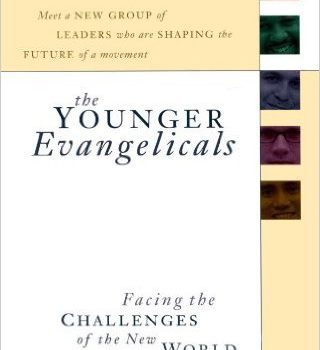Review and Critique of Robert Webber’s The Younger Evangelicals
Review and Critique of Robert Webber’s The Younger Evangelicals
Throughout church history, one can see a pendulum of thought swinging from one extreme to another and never truly finding a balance. This is exactly what Robert Webber demonstrates as he presents the evangelical leadership for the 21st century.
Webber introduces the work by defining what it means to be an “evangelical.” He defines the term as it is expressed in the four uses: biblically, theologically, historically, and culturally. He also dogmatically claims without any support that because of the postmodern culture of the 21st century there needs to be a new form or paradigm of the church (p.15). He then situates the younger evangelicals into three phases of church history from 1950 to present. Those phases are termed as: traditional (fundamentalist/new evangelical), pragmatic (church growth movement), and the younger evangelicals (emergent church). The Younger Evangelical is defined as anyone who deals thoughtfully with the shift from 20th to 21st-century culture. This cultural change is the basis of the Young Evangelical movement, yet Webber notes that this is not within the “scope” of the book (p.17). Humorously, Webber classifies the Emergent movement as a “countercultural” movement (p.18). Webber says that the younger evangelicals look to the early pre-constinian church to find a principle for the church today.
Chapter one seeks to categorize and define the three movements introduced above. Webber goes to great lengths to emphasize that fundamentalism is based upon the Baconian system of thought and thus Common Sense philosophy. He also gives a poor representation of a literal hermeneutic of Scripture. In this chapter Webber makes the extreme, false statement that Bob Jones University had a rule which forbid any student to even “pray” for Billy Graham.
Chapter two describes the nature of the younger evangelicals. This description made broad generalizations and paints with an extremely large brush. In a sense, this chapter simply states that younger evangelicals long for the type of Christianity that Webber presents. He also attempts to make a huge difference between the “literal” and “contextual” methods of interpretation.
In chapter three a case is made for the change in communication means of the postmodern culture. Oral tradition is traced throughout ancient times. It is in this chapter that the author shows his bias, revisionist historian, view of medieval Christianity (p.63). He calls the 13th century the “golden era of medieval Christianity.” This is of important note seeing that the EmergentChurch movement bases authority upon this period of church history even to the overshadowing of the New Testament texts themselves. He paints a rosy picture of medieval Christianity without any historical evidence. Sweeping statements about “all” knights being Christian, “all” apothecaries and “all” inns having biblical names are used in describing this era of church history. The changes of the print age and the Audiovisual Revolution are discussing the young evangelical blend of all three mediums of communication.
Chapter four describes how the younger evangelicals have left the far ditch of the church growth movement and entered a ditch on the other side of the road. This chapter chronicles the Ahistorical approach to church life as embodied in the business, church-growth type ministry philosophy. Testimonies of younger and older evangelicals who are fatigued with the “gimmicks” of church-marketing find stability in the church fathers. The Nicene Creed is purported as the most significant creed of the Christian church and thus it is focus of authority. Emphasis is made in this chapter to the attraction of the Celtic tradition as well as the spirit of the Wesleys by the younger evangelicals. The emphasis on medieval theology is couched as thought that “puts God at the center and shows how a world built on Enlightenment presupposition of independence from God will come to ruin.” (p.80) Throughout the book Webber’s arguments are mainly based upon experience. His generalizations reveal a reaction to the educational experiences of his own. This is seen in that he sites Carl Henry as main symbol of the traditionalist view of Scripture and history as holding the Princetonian Theology. Webber’s generalizations of the attitudes of each generational group is overly simplified and a very poor representation of traditional evangelicals. For instance, the table on page 82 cites traditionalists as holding that the church began at the Reformation, and one’s worship style being dictated by denominational tradition.
Chapter five elaborates on the shift from “propositionalism” to “narrative” theological underpinnings. This position takes away the authoritative, inerrant, basis of Scripture. The orthodoxy of Webber’s presentation of Atonement and Sin (86-87) are much in question.
Chapter six discusses the role of apologetics to a young evangelical. At the beginning of this chapter the author gives his own “testimony” of salvation which seems very weak. An attempt is made to prove that the early church practiced “incarnational apologetics” (95). Contextualization is used as an argument against foundationalism using individual experience and background as the basis of interpretation rather than a grammatical/historical hermeneutic.
Chapter seven evaluates how the younger evangelical’s theology works out practically in their approach to ecclesiology. This is mainly evidenced in the view that the church is to be visibly present on the earth universally (107). The idea of a spiritual unity of the Body of Christ is dismissed almost entirely. The document “Evangelicals and Catholics Together” is cited as a positive sign of the visible Church on earth. The church is presented as an “alternative community.” (p.118)
Chapter eight is an attempt to show that the younger evangelicals have moved the church from being mission driven to being missional it essence. The assumption is made that previous generations of evangelicalism have not embraced the biblical mission of the Great Commission but only did the actions of it.
The leadership style of the pastor is called into question in chapter nine. Emergent leaders see the imbalance of the CEO mentality of leadership practiced by the church-growth movement and thus react to it. The overreaction is made in presenting a “servant leadership” model as a “new form” of leadership (p.153).
Chapter ten displays the change in ministry philosophy as played out in the youth ministry. This chapter attempts to show that adolescents desire more spiritual “meat” that is not offered through the traditional approach to youth ministry. The idea of age-divided discipleship and educational ministries is also called into question in this discussion.
Chapter eleven continues the applicational discussion of who their philosophy plays out in each form of ministry. The ideal that education is changed from instruction to spiritual formation over generalizes and assumes that the previous generation had no discipleship motive in educational instruction. The educational philosophy of a “Christian World View” is labeled “Gnostic” (p.164). A positive aspect of the education philosophy of these younger evangelicals is the emphasis in wedding theology and practice in ministerial training. However, the undergirding philosophy that the church is in authority over the Scriptures is evidenced again in this arena.
Chapter twelve attempts to show that the younger evangelicals form of discipleship is spiritual formation which fundamentalism has only inculcated legalism. This is written in a reactionary spirit based upon the author’s personal experiences. Concerning the use of an artistic expression, the weak view of sin is evidenced again. This is shown in the amoral way in which art is presented as a medium. Several liturgical elements from the patristic era are reintroduced as part of one’s spiritual formation.
Chapter thirteen continues applicational discussion of the younger evangelical’s approach to worship. This chapter is an example of how biblical truths taken in isolation from the analogy of Scripture can be used to purport extreme teaching (p.192). This chapter does point out that evangelical seminaries have had some tendency to neglect teaching on corporate worship and focus mainly on homiletics.
Chapter fourteen gives an entire section on the use of art for spiritual growth, teaching, and worship and criticizes the view commonly held by the boomer generation that art is to be used as an illustration. In this chapter, a dispensational view of the present age is presented as Gnosticism (p.208). In order to prove the author’s point regarding aesthetics, the author says we need to listen to the “wisdom of the ages” but then gives Pope John Paul II’s comments (p.211-212). Traditionalists, especially fundamentalists, are chided for their limitation of the use of art. It begs to wonder if the author remembers from his college days where the largest collection of religious art in the western hemisphere is housed?
In chapter fifteen the issue of evangelism is elaborated on. The attempt is to show that the younger evangelicals employ a relational approach to evangelism that previous evangelical generations did not use. Many quotes are given from seminary and college professors emphasizing the effectiveness of this type of evangelism and its use in the postmodern culture. The presentation of “Process Evangelism” (p.222-225) has many doctrinal errors and clearly questions the salvation and orthodoxy of its proponents. Repentance and atonement are not mentioned. The “Rite of the Covenant” is emphasized. The explicit statement regarding the Eucharist is made, “we ingest this salvation, we allow ourselves to be fed by his saving presence and are transformed by his life within us.” Continued,“ in the rite of the Eucharist the “Journey of Jesus” is both ended and begun.”
Chapter sixteen is an argument regarding the role of the younger evangelicals in society as a whole. The roles of the Moral Majority, Christian Coalition, and other evangelical political agendas are criticized. The impression is given that the younger evangelicals focus on the poor, homeless, and abused. From the chapter, one would get the impression that the traditional evangelicals were unconcerned with issues and only focused on the political arena. This position regarding the role of the church in society is incomplete at best. Though it is presented as being so socially concerned it overlooks much biblical data regarding the responsibilities of the church in society.
Though there are on the surface many good observations by the younger evangelicals regarding younger evangelicals the failure of the church-marketing and 20th century business style of church in America, there are also many problems. It seems that many of the emphases of the younger evangelicals could somewhat be a turn toward a more biblical model of local church ministry, the reaction is taken to the other extreme.
The problems with Webber’s work are divided in three categories of doctrinal, historical, and philosophical. Doctrinally, this work is very week and hardly any exegesis is used to give authority to any position. The main sources of quotation are individuals that are still students at the time and are hardly reliable thinkers. Even though the younger evangelicals have made the patristic church the authority on the Scriptures they still do a poor job in representing them. Hardly any historical data is cited in the claims given. A revisionist mindset is employed when looking at the 13th century as well as the pre-constinian era of the church. The primary source of Webber’s arguments are philosophical. His main criticism to undermine foundational, innerrerantists is to cite the common sense logic and scientific method as being a product of the enlightenment. Thus, totally avoiding the claims Scripture makes for itself and thus the authority it bears on the church of every era. All in all, the Younger Evangelicals shows the age old problem the church has with not learning from its own history. The Emergent Church Movement is a lesson in overreaction when not firmly grounded in the inerrant Word of God.
Related Links:










